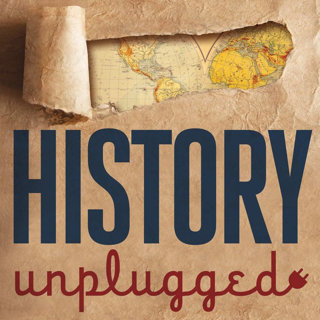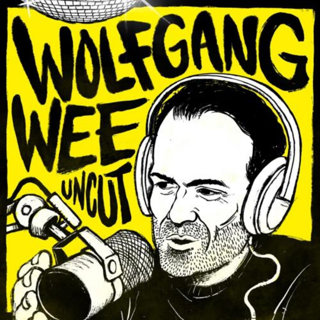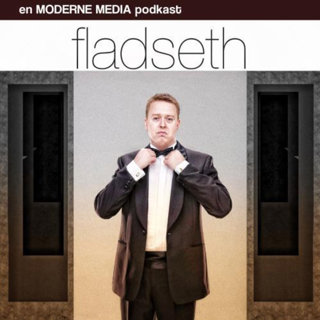
Japan’s Desperate Air Battles Against the US in the Final Months of WW2
The B-29 Bomber led the Allied strategic bombing offensive against Japan, succeeding when US Bomber Command switched from high-level daytime precision bombing to low-level nighttime area bombing. The latter tactic required Superfortresses to attack their targets individually, without a formation or escorting fighters for protection. Despite this, Japanese night fighters proved unable to stop the B-29s. This success was a testament to the B-29’s incredible capabilities, including its ability to carry up to 20,000 pounds of bombs over vast distances exceeding 3,000 miles, and its advanced pressurized cabin, which allowed crews to operate effectively at altitudes above 30,000 feet—far beyond the reach of most enemy interceptors. Coupled with its sophisticated remote-controlled gun turrets and a top speed of 350 mph, the B-29’s design showcased an unmatched blend of range, payload, and defensive prowess that overwhelmed Japanese defenses. Today’s guest, Mark Lardas, author of “B-29 Superfortress vs Japanese Nightfighter.” He examines the capabilities of the aircraft involved, and reveals the conditions under which both sides fought. He evaluates the cutting-edge technology of both sides and how it affected the outcome of the battleSee omnystudio.com/listener for privacy information.
1 Mai 37min

D-Day From the East: The Soviet Operation Bagration Crippled the Wehrmacht in Late 1944
Throughout the war on the Eastern Front, there were two consistent trends. The Red Army battled to learn how to fight and win, while involved in a struggle for its very survival. But by 1944 it had a leadership that was able to wield it with lethal effect and with far more effective equipment than before. By contrast, the Wehrmacht had commenced a slow process of decline after the invasion of the Soviet Union. Hitler became increasingly unwilling to delegate decision-making to commanders in the field, which had been crucial to earlier success. The long years of fighting had also taken a heavy toll. Thousands of irreplaceable junior officers and NCOs were dead, wounded or prisoners.Today’s guest is Prit Buttar, author of “Bagration 1944: The Great Soviet Offensive.” We look at these trends, which culminated in the huge battles of Bagration. In 1944, the Red Army finally put together a campaign that utterly destroyed the German Army Group Centre. The Wehrmacht suffered the loss of over 300,000 men killed, wounded or taken prisoner and the Red Army rolled forward across Belarus to the outskirts of Warsaw. The end of the war was still many months away, and the Germans managed to reconstruct their line on the Eastern Front, but final victory for the Soviet Union was now only a matter of time as a direct consequence of Bagration.See omnystudio.com/listener for privacy information.
29 Apr 42min

Pilgrimages Involved Penitent Marches, Visiting Holy Places, and Watching Drunken Emperors Go on Chariot Rides
Pilgrimages are a universal phenomenon, from China’s bustling Tai Shan to the ancient Jewish treks to Jerusalem. But why? What is it about a grueling penitent march to an isolated temple that has become a prerequisite for a civilization of any size, whether Chicen Itza in the Mayan Empire or the holy sites of Mecca? To explore this is today’s guest, Kathryn Hurlock, author of “Holy Places: How Pilgrimages Changed the World.” We also look at whether pilgrimages have become too easy in the 21st century. Has jetting off to Mecca or Rome for a quick indulgence turned them into spiritual tourism, a la Disneyland?See omnystudio.com/listener for privacy information.
24 Apr 44min

Britain Learned How to Set Up Its Global Empire on a Tiny Bermudan Island
Years before Jamestown planters made New World farming profitable by growing tobacco, and years before their countrymen up north in Plymouth Colony managed to overcome their starvation conditions and acclimate to New England’s growing conditions, there was an English settlement in Bermuda that was wealthier, larger, and more prosperous. It was established in 1612 on an island less than one square mile but grew to the heart of the Atlantic economy. Bermuda, once home to more settlers than Virginia or Massachusetts, became England’s first profitable plantation, pioneering tobacco cultivation and the use of enslaved Africans—practices that later spread to the mainland. In this episode, historian and archaeologist Michael Jarvis joins us to uncover the hidden history of Bermuda and its pivotal role in reshaping our understanding of colonial America. Jarvis, dubbed "Chainsaw Mike" by his students, has spent 14 years excavating Smith’s Island, clearing away endless brush, and unearthing one of the first English settlements in the New World. From supplying Jamestown with food to influencing early colonial economics, Jarvis argues Bermuda is a missing cornerstone of America’s origin story, far more than the historical footnote it’s often been relegated to.See omnystudio.com/listener for privacy information.
22 Apr 44min

The Hatfield-McCoy Feud Started Over a Pig and Nearly Escalated Into a Regional War
The origins of the Hatfield-McCoy conflict (between the Hatfield family of West Virginia, led by William Anderson "Devil Anse" Hatfield, and the McCoy family of Kentucky, led by Randolph "Old Randall" McCoy) begins with a dispute over a pig. From here, it escalated from minor disagreements to violent encounters that spanned decades, nearly sparking a war between the two states. Today’s guest is Jennifer Bennie, host of the Walk With History podcast. We look at the historical context of the feud, its escalation from minor disputes to violent encounters, and its significance in American folklore. See omnystudio.com/listener for privacy information.
17 Apr 45min

The 1845 Potato Blight Struck Across Northern Europe. Why Did Only Ireland Starve?
In 1845, a novel pathogen attacked potato fields across Europe, from Spain to Scandinavia—but only in Ireland were the effects apocalyptic. At least one million Irish people died, and millions more scattered across the globe, emigrating to new countries and continents. Less than fifty years after the union of Ireland with the rest of Great Britain, the newly formed United Kingdom—the most powerful country in the nineteenth-century world—failed millions of its own citizens, leading to decades of poverty, ecological ruin, and collective trauma. How did this happen? Today’s guest Padraic Scanlan recontextualizes the disaster’s origins, events, and consequences in his new book “Rot: An Imperial History of the Irish Famine.” We situate the Irish Great Famine in a larger history of economic consolidation and exploitation caused by British policies toward Ireland. The blight that decimated the potato plants was biological, but the Famine itself was manmade, caused by the British government’s structures of land ownership, labor, and rent collection. The real tragedy of the Famine wasn’t that the British maliciously intended and propagated starvation, but that their efforts to address the “Irish Question” only exacerbated the problem.See omnystudio.com/listener for privacy information.
15 Apr 48min

A Simple Tennessee Preacher Transformed Abolitionism from a Deeply Unpopular Radical Movement to a Centrist Cause
Sitting high above the small community of Ripley, Ohio, a lantern shone in the front window of a small, red brick home at night. It was a signal to slaves just across the Ohio River. Anyone fleeing bondage could look to Reverend John Rankin’s home for hope. To the slaveholders they fled from, Rankin’s activities as a “conductor” on the Underground Railroad invoked rage. Mobs often pelted Rankin with eggs and rocks, bounties were placed on his head, and midnight assassins lurked in the darkness, waiting for the right opportunity to take out the “Father of Abolitionism.” Despite frequent threats, he remained committed to the freedom of his fellow man.Today’s guest is Caleb Franz, author of The Conductor: The Story of Rev. John Rankin, Abolitionism's Essential Founding Father, we look at the story of the man who served as a George Washington–type figure to the antislavery movement. Rankin’s leadership brought unity and clarity to the often factious abolitionists of the nineteenth century. William Lloyd Garrison, Harriet Beecher Stowe, and countless others found inspiration in his teachings. He also presented abolitionism as a moderate movement, helping to make it palpable to Southern centrists who considered most abolitionists Yankee radicals who wanted to watch America descend into a Haitian-style race war.See omnystudio.com/listener for privacy information.
10 Apr 51min

How Benjamin Franklin’s Stove Invention Kept Early America From Freezing
The biggest revolution in Benjamin Franklin’s lifetime was made to fit in a fireplace. Assembled from iron plates like a piece of flatpack furniture, the Franklin stove became one of the era's most iconic consumer products, spreading from Pennsylvania to England, Italy, and beyond. It was more than just a material object, however—it was also a hypothesis. Franklin was proposing that, armed with science, he could invent his way out of a climate crisis: a period of global cooling known as the Little Ice Age, when unusually bitter winters sometimes brought life to a standstill. He believed that his stove could provide snug indoor comfort despite another, related crisis: a shortage of wood caused by widespread deforestation. And he conceived of his invention as equal parts appliance and scientific instrument—a device that, by modifying how heat and air moved through indoor spaces, might reveal the workings of the atmosphere outside and explain why it seemed to be changing. Today’s guest is Joyce Chaplin, author of The Franklin Stove: An Unintended American Revolution, the story of this singular invention, and a revelatory new look at the Founding Father we thought we knew. We follow Franklin as he promotes his stove in Britain and France, while corresponding with the various experimenters who discovered the key gases in Earth's atmosphere, invented steam engines, and tried to clean up sooty urban air. During his travels back and forth across the Atlantic, we witness him taking measurements of the gulf stream and observing the cooling effect of volcanic ash from Iceland. And back in Philadelphia, we watch him hawk his invention while sparring with proponents of the popular theory that clearcutting forests would lead to warmer winters by reducing the amount of shade cover on the surface of the Earth.See omnystudio.com/listener for privacy information.
8 Apr 41min





















